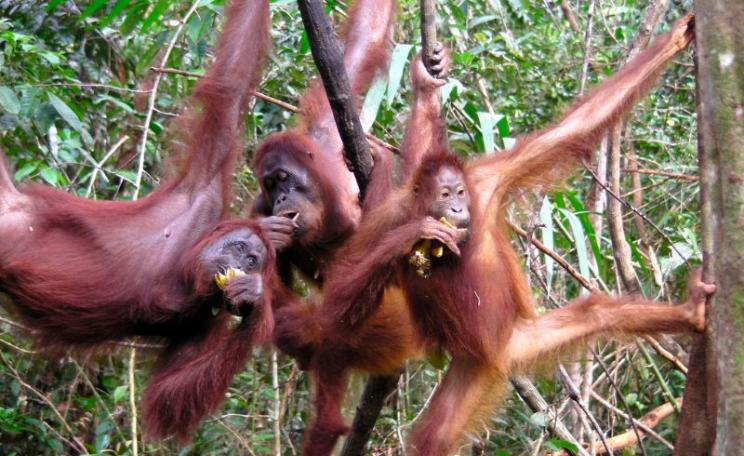Estimates of the number of species on earth vary between 5 million and 50 million, of which less than 2 million have been named, so there is a long way to go
An international team of researchers led by Oxford Brookes University has revealed a new species of primate in a paper published by the American Journal of Physical Anthropology.
The primate which is the largest known dwarf galago or bushbaby, has been named the Angolan dwarf galago, named after the only country where it is known to occur.
The news comes after primate conservation experts called for urgent action to protect the world's dwindling primate populations last month.
Lead author Magdalena Svensson from Oxford Brookes University said: "When we first encountered the new species in Kumbira Forest in north-western Angola, we heard a distinctive ‘crescendo' call similar to that of a tiny galago, but upon seeing one, we were struck by its remarkably large size.
"Until now, call types have been the most reliable way to distinguish galago species, and to find one that did not match what we expected was very exciting."
Dr Russell Mittermeier of Conservation International said of the report: "This new Galago species is a very exciting discovery. It is only the fifth new primate described from the African mainland since 2000 and only the second species of galago. What is more, it is from Angola, where there has been very little primate research to date."
The team collected photographs, vocalisation recordings and behavioural information on live individuals in the wild as well as conducting more details measurements on museum specimens, and concluded that this species is unique in terms of its loud calls, fur colouration, and body size, which is approximately three times the size than the diminutive 80 g of typical dwarf galagos.
Despite being similar to the genus Galago in size, the structure of its calls and the elongated shape of its skull linked it to the group of tiny West African dwarf galagos (genus Galagoides) - thus making the new species a giant among dwarfs.
The morphology and calls of this new species are so unique that there was no need to resort to genetic techniques to verify it further. Renowned galago taxonomist and co-author Professor Judith Masters of Nelson Mandela Metropolitan University in South Africa said: "The uncovering of this species is characteristic of the return of real biology.
"Although DNA has yielded new and sometimes highly contestable specimens, in the case of this new galago, the differences are obvious for all to see."
Galagos are small nocturnal primates that are widespread over sub Sub-Saharan Africa. Over the last five decades, the number of species recognised has slowly climbed from 6 to 19 species including this new species. Similarly, among lemurs, the primates of Madagascar, the number of species described has risen from less than 30 to more than 100 in the same time.
Team member, Professor Simon Bearder from Oxford Brookes University noted: "We should not be surprised by the discovery of unknown species. Estimates of the number of species on earth vary between 5 million and 50 million, of which less than 2 million have been named, so there is a long way to go."
Until now, civil unrest and the difficulty of working at night have stood in the way of understanding the true nocturnal diversity of the African rainforests, and this species is one example of what lies in wait to be discovered.
Co-author Professor Anna Nekaris of Oxford Brookes University said "It is no surprise to find not only a new species, but one with such distinctive body proportions, making it really a whole new kind of bushbaby. We have been seeing this emerging diversity in Madagascar over the last two decades, yet the nocturnal species of Africa and Asia remain still comparatively unexplored and this giant dwarf galago is just the tip of the iceberg in new discoveries."
The discovery of this amazing primate does not ensure its future protection, according to co-author Elena Bersacola of Oxford Brookes University: "We still know very little about the Angolan galago, what they eat, their social interactions, how and if they are able to adapt to climate and habitat changes.
"We know that they occur in a relative wide variety of habitats and elevation gradients. They are present in dry savannah-woodland habitats, but their numbers are much higher within tall forests at higher altitudes."
Deforestation due to commercial logging is increasingly rapidly throughout the Angolan Escarpment forests. The fact that these are the very forests that harbour a newly discovered, endemic primate highlights the importance of the Angolan ecosystems and sends a clear message about the urgent need for conservation measures in this region.







